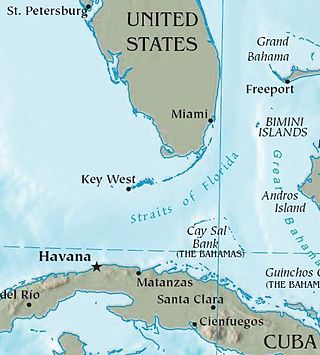
The Immigration and Nationality Act of 1965, also known as the Hart–Celler Act and more recently as the 1965 Immigration Act, is a landmark federal law passed by the 89th United States Congress and signed into law by President Lyndon B. Johnson. The law abolished the National Origins Formula, which had been the basis of U.S. immigration policy since the 1920s. The act formally removed de facto discrimination against Southern and Eastern Europeans as well as Asians, in addition to other non-Western and Northern European ethnicities from the immigration policy of the United States.
Refugee law is the branch of international law which deals with the rights and duties states have vis-a-vis refugees. There are differences of opinion among international law scholars as to the relationship between refugee law and international human rights law or humanitarian law.
Since 1945, immigration to the United Kingdom, controlled by British immigration law and to an extent by British nationality law, has been significant, in particular from the Republic of Ireland and from the former British Empire, especially India, Bangladesh, Pakistan, the Caribbean, South Africa, Nigeria, Ghana, Kenya, and Hong Kong. Since the accession of the UK to the European Communities in the 1970s and the creation of the EU in the early 1990s, immigrants relocated from member states of the European Union, exercising one of the European Union's Four Freedoms. In 2021, since Brexit came into effect, previous EU citizenship's right to newly move to and reside in the UK on a permanent basis does not apply anymore. A smaller number have come as asylum seekers seeking protection as refugees under the United Nations 1951 Refugee Convention.

The Immigration Act of 1990 was signed into law by George H. W. Bush on November 29, 1990. It was first introduced by Senator Ted Kennedy in 1989. It was a national reform of the Immigration and Nationality Act of 1965. It increased total, overall immigration to allow 700,000 immigrants to come to the U.S. per year for the fiscal years 1992–94, and 675,000 per year after that. It provided a family-based immigration visa, created five distinct employment based visas, categorized by occupation, and a diversity visa program that created a lottery to admit immigrants from "low admittance" countries or countries whose citizenry was underrepresented in the U.S.
The right of asylum is an ancient juridical concept, under which people persecuted by their own rulers might be protected by another sovereign authority, such as a second country or another entity which in medieval times could offer sanctuary. This right was recognized by the Ancient Egyptians, the Greeks, and the Hebrews, from whom it was adopted into Western tradition. René Descartes fled to the Netherlands, Voltaire to England, and Thomas Hobbes to France, because each state offered protection to persecuted foreigners.

The wet feet, dry feet policy or wet foot, dry foot policy was the name given to a former interpretation of the 1995 revision of the application of the Cuban Adjustment Act of 1966 that essentially says that anyone who emigrated from Cuba and entered the United States would be allowed to pursue residency a year later. Prior to 1995, the U.S. government allowed all Cubans who reached U.S. territorial waters to remain in the U.S. After talks with the Cuban government, the Clinton administration came to an agreement with Cuba that it would stop admitting people intercepted in U.S. waters.

The United States recognizes the right of asylum for individuals seeking protections from persecution, as specified by international and federal law. People who seek protection while outside the U.S. are termed refugees, while people who seek protection from inside the U.S. are termed asylum seekers. Those who are granted asylum are termed asylees.

The Cuban Adjustment Act, Public Law 89-732, is a United States federal law enacted on November 2, 1966. Passed by the 89th United States Congress and signed into law by President Lyndon Johnson, the law applies to any native or citizen of Cuba who has been inspected and admitted or paroled into the United States after January 1, 1959 and has been physically present for at least one year, and is admissible to the United States as a permanent resident.
VOLAG, sometimes spelled Volag or VolAg, is an abbreviation for "Voluntary Agency". This term refers to any of the nine U.S. private agencies and one state agency that have cooperative agreements with the State Department to provide reception and placement services for refugees arriving in the United States. These agencies use funding from the State Department's Bureau of Population, Refugees, and Migration (PRM) along with self-generated resources to provide refugees with a range of services including sponsorship, initial housing, food and clothing, orientation and counseling. VOLAGs may also contract with the Office of Refugee Resettlement to provide job placement, English language training and other social services. Each of the ten voluntary agencies recognized by the federal government vary significantly in their history, experience, size, denominational affiliation, philosophy, primary clientele, administrative structure, resettlement capacity, and institutionalized resettlement. Of the ten U.S. resettlement agencies, all of them are religiously affiliated or faith-based with the exception of the International Rescue Committee. The tenth VOLAG was added fairly recently in November 2022, when Bethany Christian Services (BCS) was officially designated as its own resettlement agency by the PRM.
During the 18th and most of the 19th centuries, the United States had limited regulation of immigration and naturalization at a national level. Under a mostly prevailing "open border" policy, immigration was generally welcomed, although citizenship was limited to “white persons” as of 1790, and naturalization subject to five year residency requirement as of 1802. Passports and visas were not required for entry to America, rules and procedures for arriving immigrants were determined by local ports of entry or state laws, and processes for naturalization were determined by local county courts.
Immigration equality is a citizens' equal ability or right to immigrate their family members. It also applies to fair and equal execution of the laws and the rights of non-citizens regardless of nationality or where they are coming from. Immigration issues can also be an LGBT rights issue, as government recognition of same-sex relationships vary from country to country.

The Indochina Migration and Refugee Assistance Act, passed on May 23, 1975, under President Gerald Ford, was a response to the Fall of Saigon and the end of the Vietnam War. Under this act, approximately 130,000 refugees from South Vietnam, Laos and Cambodia were allowed to enter the United States under a special status, and the act allotted special relocation aid and financial assistance.
The Office of Immigration Statistics (OIS) is an agency of the United States Department of Homeland Security under the Office of Strategy, Policy, and Plans.
The Office of Refugee Resettlement (ORR) is a program of the Administration for Children and Families, an office within the United States Department of Health and Human Services, created with the passing of the United States Refugee Act of 1980. The Office of Refugee Resettlement offers support for refugees seeking safe haven within the United States, including victims of human trafficking, those seeking asylum from persecution, survivors of torture and war, and unaccompanied alien children. The mission and purpose of the Office of Refugee Resettlement is to assist in the relocation process and provide needed services to individuals granted asylum within the United States.

The 2014 American immigration crisis was a surge in unaccompanied children and women from the Northern Triangle of Central America (NTCA) seeking entrance to the United States in 2014. According to U.S. law, an unaccompanied alien child refers to a person under 18 years of age, who has no lawful immigration status in the U.S., and who does not have a legal guardian to provide physical custody and care.
American Baptist Churches v. Thornburgh 760 F. Supp. 796, formerly American Baptist Churches v Meese, s a class action lawsuit against the Immigration and Naturalization Service (INS), the Executive Office for Immigration Review (EOIR), and the Department of State. (DOS). The suit was filed in 1985 by a coalition of religious organizations, refugee legal assistance organizations, and numerous human rights organizations, including the American Civil Liberties Union (ACLU), the Center for Constitutional Rights (CCR), and the National Lawyers Guild.(NLG) Although the case originally stated two different groups of plaintiffs, various religious organizations involved in the Sanctuary movement and Central American refugees, after changes were made to criminal laws formerly used to prosecute these religious organizations, the focus of the suit was centered more specifically to claims of discrimination against Central American refugees in asylum seeking processes. This, they argued, was in direct violation of the tenets of the Refugee Act of 1980, which sought to create uniform criteria by which to review cases in which individuals fleeing political persecution and humanitarian crises would become eligible for asylum. After five years, the government settled the case, granting temporary protected status for many Salvadoran and Guatemalan immigrants and providing them with among other things, de novo asylum interviews, stays from deportation and work authorization.
Third country resettlement or refugee resettlement is, according to the UNHCR, one of three durable solutions for refugees who fled their home country. Resettled refugees have the right to reside long-term or permanent in the country of resettlement and may also have the right to become citizens of that country.
Federal policy oversees and regulates immigration to the United States and citizenship of the United States. The United States Congress has authority over immigration policy in the United States, and it delegates enforcement to the Department of Homeland Security. Historically, the United States went through a period of loose immigration policy in the early-19th century followed by a period of strict immigration policy in the late-19th and early-20th centuries. Policy areas related to the immigration process include visa policy, asylum policy, and naturalization policy. Policy areas related to illegal immigration include deferral policy and removal policy.

Joe Biden's immigration policy is primarily based on reversing many of the immigration policies of the previous Trump administration. During his first day in office, Biden reversed many of Trump's policies on immigration, such as halting the construction of the Mexican border wall, ending Trump's travel ban restricting travel from 14 countries, and an executive order to reaffirm protections for DACA recipients. The Biden administration and Department of Homeland Security, under leadership of Alejandro Mayorkas, dramatically reined in deportation practices of Immigration and Customs Enforcement (ICE), prioritizing national security and violent crime concerns over petty and nonviolent offenses. However, Biden has also faced criticism for extending Title 42, a Trump administration border restriction that arose due to the COVID-19 pandemic, as well as restarting the use of expediting families in Central America, which can cause families to be sent back in weeks, compared to years for an average immigration case. In the fiscal year 2021, the US Border Patrol confirmed more than 1.6 million encounters with migrants along the US-Mexico border, more than quadruple the number in the previous fiscal year and the largest annual total on record. In January 2023, Biden announced a program to strengthen the admission of immigrants from Cuba, Haiti, Nicaragua, and Venezuela, while at the same time his administration will crack down on those who fail to use the plan's legal pathway and strengthen border security. In May 2023, the Biden Administration approved sending 1,500 more troops to the U.S.-Mexico border following Title 42's expiration.








